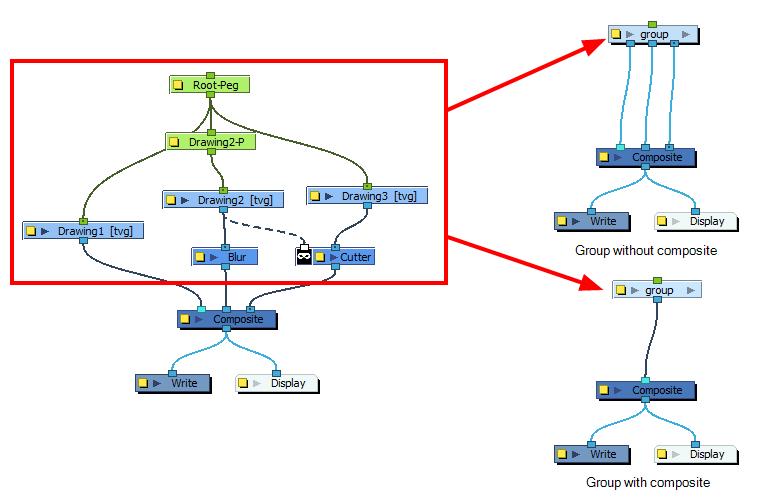With so many connections and nodes possible, the Timeline and Node views can quickly become cluttered. You can use groups to keep your scenes organized.

When grouping nodes, you can choose to create a simple group, or a group with a composite. A simple group will simply help you organize your Node view, whereas a group with composite will connect all the nodes in your group to the same composite, and connect that composite to the outside of your group. This makes the group have a single outgoing connection for its composite, rather than one connection for each node that connected to your scene's composite.

Hence, grouping nodes with a composite is a quick way of connecting several layers that need to be composited together to the same composite node. However, grouping nodes without a composite allows you to connect the layers inside the group to different parts of the Node view outside of the group, allowing you to preserve and tweak the stacking order of the group's content relative to the remainder of the scene if needed.
Using the Move to Parent Group command allows you to move the selected node to the parent level, maintaining all connections. If the operation cannot maintain the connections between the nodes, you will be notified and the operation will be terminated.